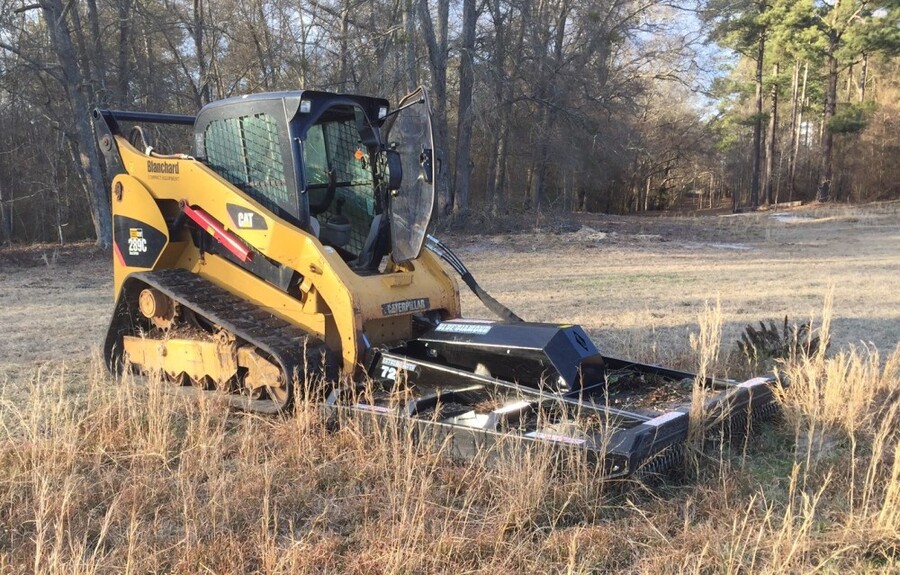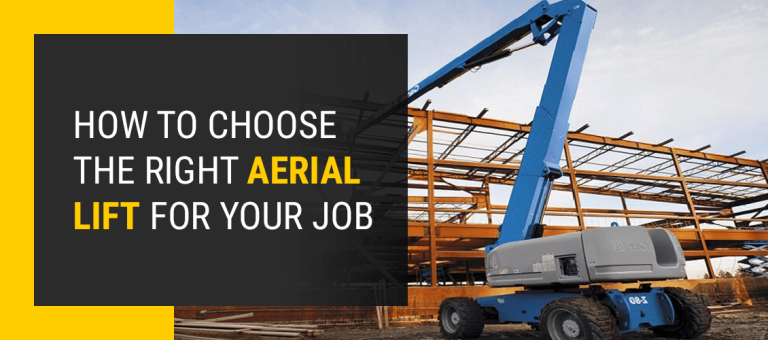Which Skid Steer Attachments Require High Flow?
Which Skid Steer Attachments Require High Flow?

The technicalities of skid steers and their attachments sometimes can cause problems for many. However, understanding how your machine works is crucial not only when it comes to its operation but also costs, maintenance, and most importantly – safety. Today, we would like to talk a bit more about high-flow skid steers and how important it is to choose a compatible high-flow attachment. Without further ado, here is the why and the how of skid steers’ hydraulic flow.
What is a high-flow skid steer?
Hydraulic flow is the movement of hydraulic fluid in the system of a machine. The measure of that movement within a certain time is called a flow rate and is expressed in gallons per minute (GPM). We therefore can come across machines with standard flow rates and high flow rates operating at different ranges:
– standard flow skid steer: 16- 26 GPM
– high flow skid steer: 27- 45 GPM
High-flow hydraulics is responsible for a greater horsepower from your skid steer pump. Greater power is needed to perform some heavy-duty jobs such as grinding, tree mulching, or asphalt grinding (cold planing). Horsepower also measures how much your skid steer can do in a set timeframe. How does that correspond to skid steer attachments? Skid steer attachments, for example, brush cutters are designed to work on certain hydraulic flows.
The key is compatibility. If the application requires more power and therefore a high-flow skid steer, you should not choose an attachment that pairs with a standard flow skid steer.
What will happen if you choose to run a low flow attachment on a high flow skid steer or the opposite? When a high-flow attachment receives a lower flow than is required, it will be less efficient or not work at all. It may even result in damage to the skid steer hydraulics or an attachment itself.
The most popular high-flow attachments for skid steers
Knowing the basics, we can now present a few high-flow skid steer attachments that will work perfectly with a high-flow system:
Swing Arm Stump Grinders
In this case, two parts need a high horsepower to operate properly. The stump grinder’s flywheel needs to cut through the stump as well as the swing arm must stay functional.
Trencher Attachments
Any high-flow machine will be compatible with trenchers. If you need to cut through a rocky surface, it is best to save time by trying a high flow trencher. Increased speed is one thing, but more importantly, high flow capabilities assure more torque and no breaks in the execution due to machine stalling.
Drum Mulchers
Working against the resistance of trees and debris sounds like a job involving a lot of horsepower. Drum mulchers and disc mulchers are best equipped to tackle it if they work at in high flow, especially when you plan to slice down trees and mulch them up.
Brush Cutters
Cutting through thick undergrowth is a perfect job for a machine with greater hydraulic power. Pay attention to the type of motor as well to avoid damaging any parts of your equipment.
Power Rakes
A question we often come across is: will a power rake attachment work using standard flow? Yes, they will providing your machine has a strong pump and runs at a minimum of 16 GPM. Will it take longer to finish the job? Yes, especially when working in dry hard ground conditions. Most power rakes can run up to 40-45 GPM at 4000 PSI giving you the ultimate performance to refresh gravel driveways or to prepare a lot for seeding.
Augers
More torque is the key to efficient work of with augers, especially when the ground you need to work in is hard and rocky. Power generated by high-flow machines is beneficial in boosting efficiency but also guarantees more safety. The attachment that has more power is less likely to fail due to twisting during work.
Concrete Planers
With this type of work, it is not only advisable to use a high-flow attachment, but it is the only option. Concrete is an example of a very hard surface and only high-flow hydraulics will suffice.
Snow Blowers
Snow removal can be done in standard flow conditions will result in efficient operation (providing you match attachment and skid steer hydraulic flow). However, if you need to blow snow further, high-flow systems will be your best option.
The cost of a high-flow hydraulic system
Cost is always an important factor influencing any machine purchase. Not going to lie, high-flow skid steers as well as matching attachments are usually more expensive. However, considering other factors, the money you save by not having the high flow option, most likely won’t save you money in the long term.
First, if you use standard flow attachments in more demanding and harder terrain, you may risk damaging your attachment or machine. You may even put your own safety at risk trying to use a lessor attachment in an application that needs more power. In this case, breaking an attachment not suitable for the job, or taking more risk as an operator will not be cost effective.
Secondly, the flow (GPM) influences attachment’s productivity. Even if you do not damage your lesser attachment performing harder tasks, you will spend a lot more time completing the same job. A wise man once said: time is money. By spending more time performing certain jobs you are not moving on to other duties that may generate more income. So, to some extent, you are spending more money on standard flow machines.
Finally, high-flow equipment will last you years and keep you safe.
Have a browse through our shop to find the best-priced high-flow skid steer attachments well-tailored to fit your needs.

